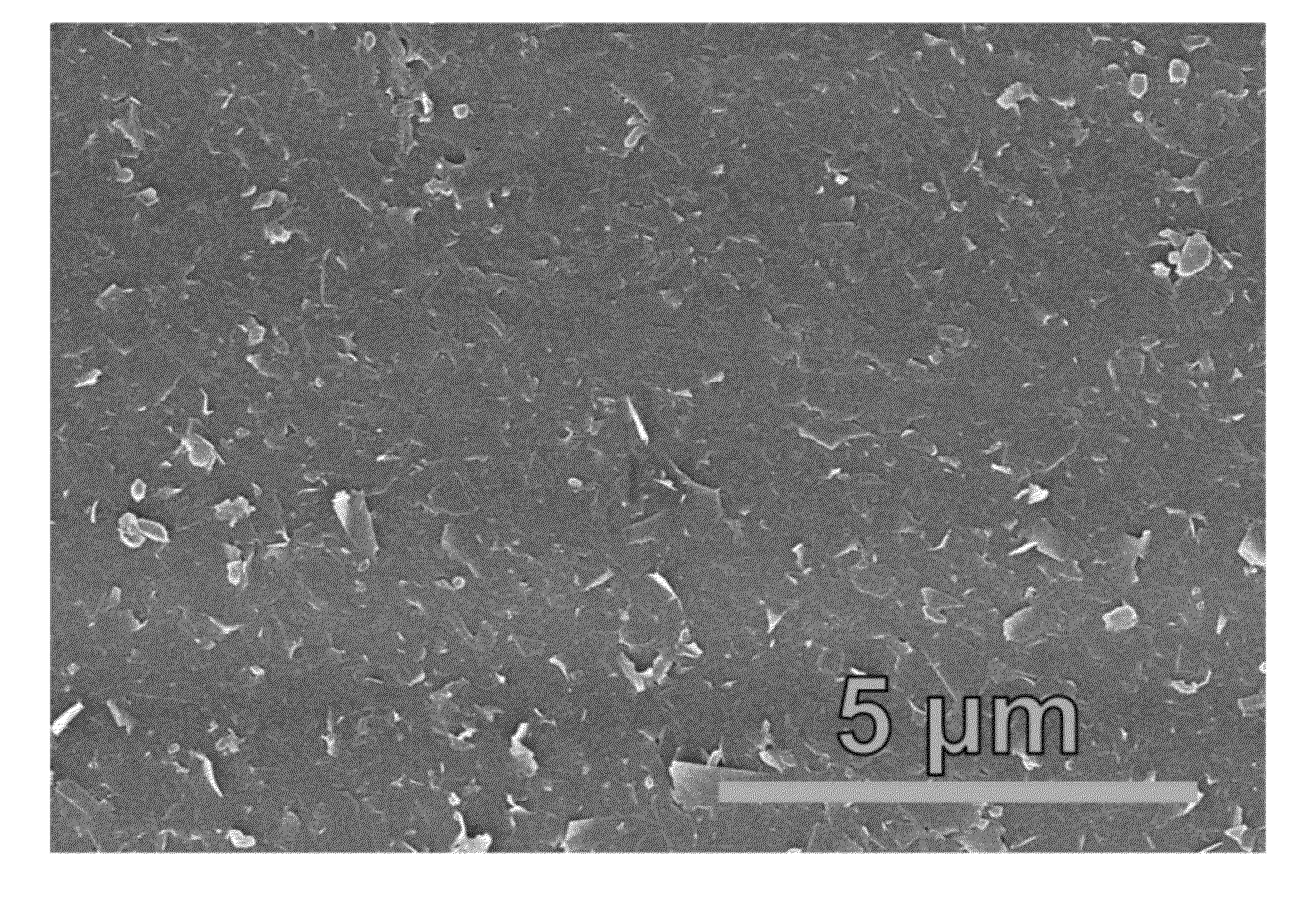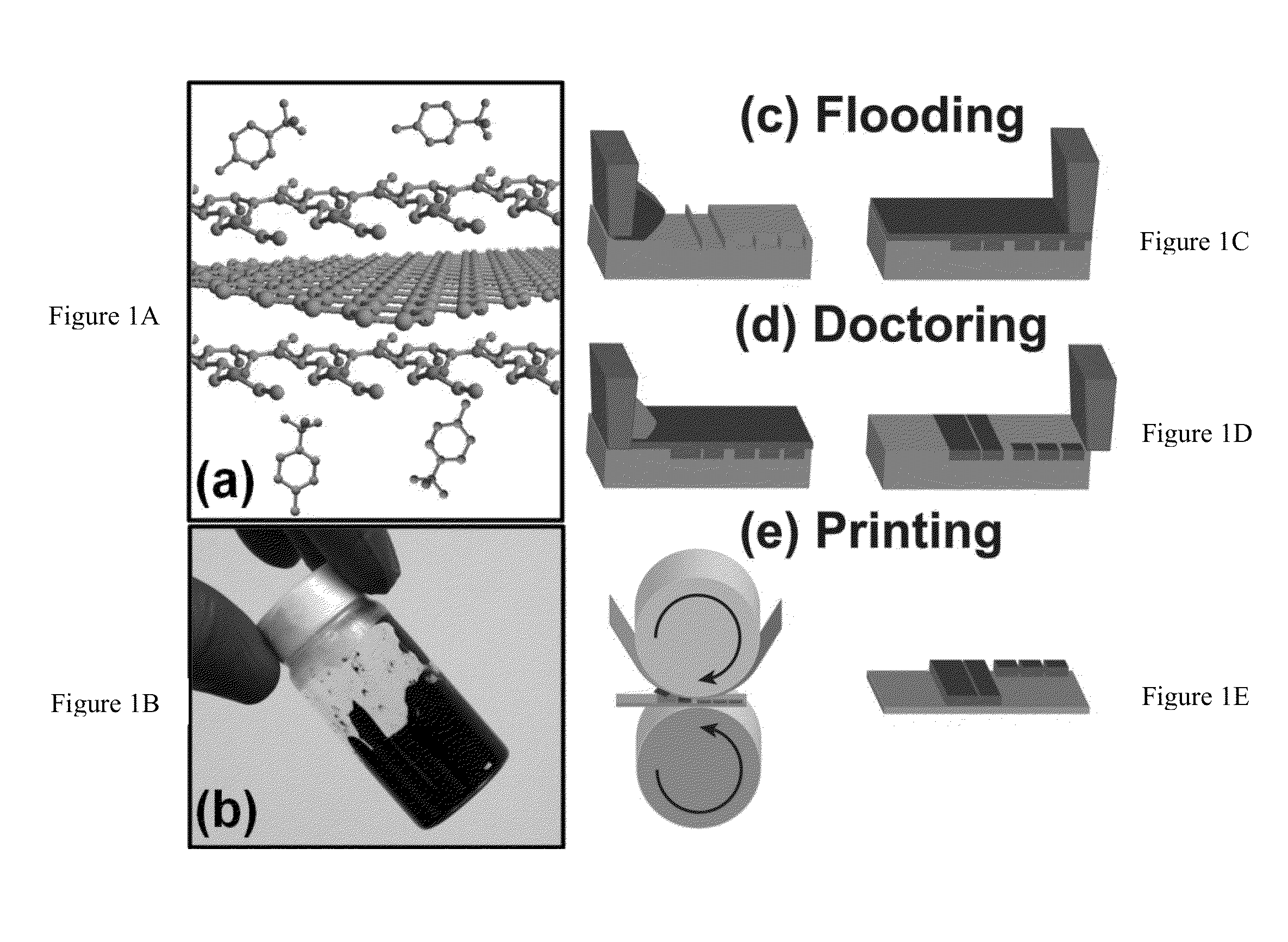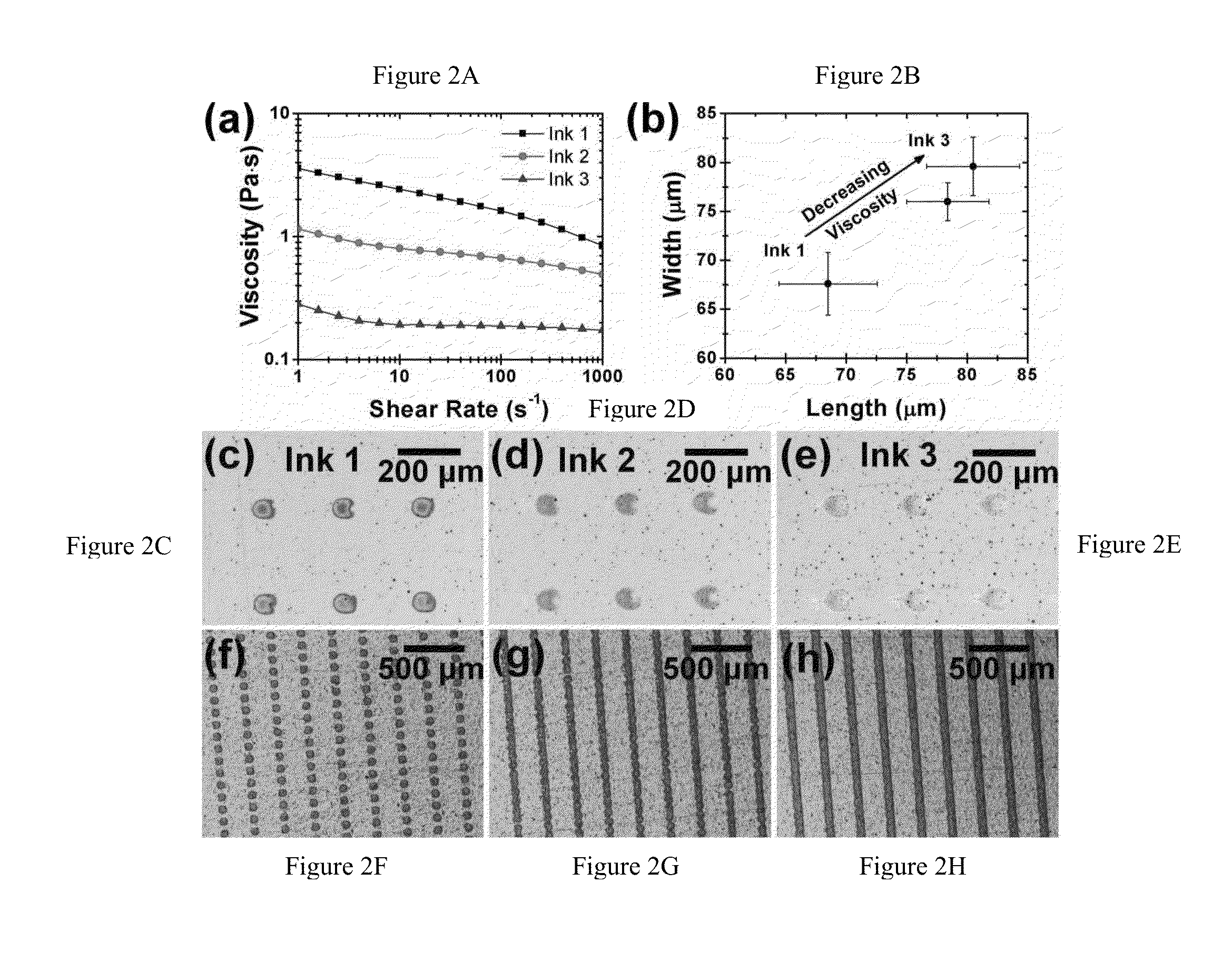High-Resolution Patterning of Graphene by Screen and Gravure Printing for Highly Flexible Printed Electronics
a printing electronics, high-resolution technology, applied in the direction of inks, instruments, photomechanical equipment, etc., can solve the problems of limited throughput, graphene technique has not yet been demonstrated, and printed and flexible electronics are potentially disruptive technologies, etc., to achieve a tunable surface tension and viscosity, economic, and efficient approach
- Summary
- Abstract
- Description
- Claims
- Application Information
AI Technical Summary
Benefits of technology
Problems solved by technology
Method used
Image
Examples
example 1
[0065]Graphene exfoliation and processing: Natural graphite flake (10.0 g, Asbury Graphite Mills, 3061 Grade) was dispersed in a solution of ethyl cellulose (EC) in ethanol (2% w / v dispersion, 200 mL; EC: Aldrich, viscosity 4 cP, 5% in toluene / ethanol 80:20, 48% ethoxy; ethanol: Koptec, 200 proof) in a stainless steel beaker. The dispersion was sonicated using a probe sonication system (Fisher Scientific Sonic Dismembrator Model 500, 13 mm Branson tip) for 90 minutes at 50 W in an ice water bath. The resulting dispersion was centrifuged (Beckman Coulter Avanti® J-26 XPI) at 7,500 rpm (˜10,000 g) for 15 minutes, and the supernatant was collected. This dispersion was mixed with deionized water (4:3 weight ratio) and centrifuged at 7,500 rpm for 10 minutes, after which the supernatant was discarded. The resulting graphene-EC solid was dried and redispersed in ethanol at a concentration of 10 mg / mL. This dispersion was mixed with an aqueous solution of NaCl (0.04 g / mL, Sigma-Aldrich, >9...
example 2
[0066]Ink preparation and characterization: Graphene-EC powder (1.0 g) was dispersed in ethanol (˜25 mL) and terpineol (10 mL, Aldrich, mixture of isomers, anhydrous) by bath sonication. This dispersion was passed through a 3.1 μm glass fiber filter membrane (Acrodisc®). The filtered dispersion was heated on a hot plate to remove ethanol, yielding a final ink of 10% w / v solids in terpineol (Ink 1, FIG. 2A). The medium and low viscosity inks (Inks 2 and 3, FIG. 2A, respectively) were prepared by a similar technique with different concentrations (7.2% w / v and 5% w / v solids, respectively). The shear viscosity of the inks was measured using a Physica MCR 300 rheometer equipped with a 25 mm, 2° cone and plate geometry at shear rates of 1-1000 s−1. The temperature was controlled by a Peltier plate at 25° C.
example 3
[0067]Gravure printing pattern fabrication: A Si(100) wafer was cleaned by piranha solution (5:1 H2SO4 and H2O2) for 15 minutes at 120° C., rinsed with deionized water and dried. The wafer was prebaked at 115° C. for 1 minute, after which photoresist (Shipley 1813) was spin-coated onto the wafer at 3000 rpm for 30 seconds. A soft baking step was carried out at 110° C. for 1 minute to drive off solvents and improve adhesion. A mask designed with the gravure cell patterns was aligned with the wafer during a 5 second exposure to UV light (MABA6). The wafer was immersed in developer solution for 1 minute, rinsed with deionized water, and dried. The patterned wafer was then dry etched to the required depth by reactive ion etching (SLR 770 Deep Trench Etcher). The wafer was then washed in acetone, ethanol, and deionized water prior to being used as a gravure pattern.
PUM
| Property | Measurement | Unit |
|---|---|---|
| viscosity | aaaaa | aaaaa |
| viscosity | aaaaa | aaaaa |
| thickness | aaaaa | aaaaa |
Abstract
Description
Claims
Application Information
 Login to View More
Login to View More - R&D
- Intellectual Property
- Life Sciences
- Materials
- Tech Scout
- Unparalleled Data Quality
- Higher Quality Content
- 60% Fewer Hallucinations
Browse by: Latest US Patents, China's latest patents, Technical Efficacy Thesaurus, Application Domain, Technology Topic, Popular Technical Reports.
© 2025 PatSnap. All rights reserved.Legal|Privacy policy|Modern Slavery Act Transparency Statement|Sitemap|About US| Contact US: help@patsnap.com



